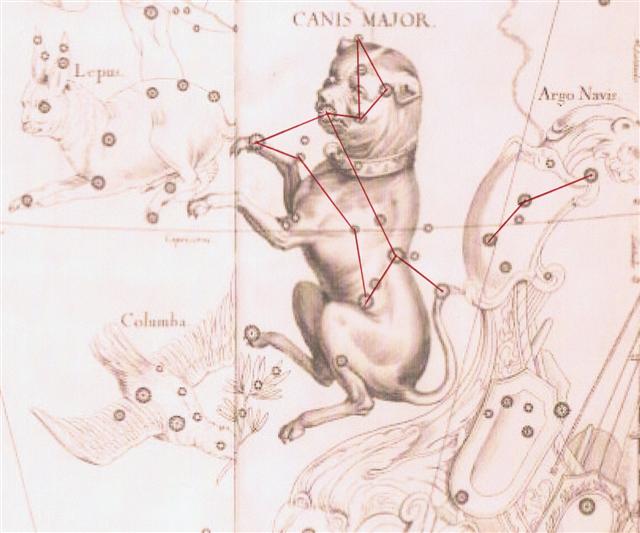Let's now return to the kuhane stations. Only one of them was obviously connected with a specific star, viz. Te Pou which was the name for Sirius.
... The actual props, pillars or posts which separated the sky and earth are called toko in New Zealand, to'o in the Marquesas Islands and pou in Tahiti. In Rapanui tuu and pou are known, with pou meaning column, pillar or post of either stone or wood. Sometimes the word is applied to a natural rock formation with postlike qualities which serves as an orientation point. The star Sirius is called Te Pou in Rapanui and functions in the same way. This is the brightest and also the uniquely 'fixed' star of the night sky ... The Sothic cycle was based on what is referred to in technical jargon as 'the periodic return of the heliacal rising of Sirius', which is the first appearance of this star after a seasonal absence, rising at dawn just ahead of the sun in the eastern portion of the sky. In the case of Sirius the interval between one such rising and the next amounts to exactly 365.25 days - a mathematically harmonious figure, uncomplicated by further decimal points, which is just twelve minutes longer than the duration of the solar year. Sirius and the Sun were 'hand in hand' striving in the opposite direction compared to most of the other stars in the sky. Sirius was not pushed further and further ahead in the year due to the precession. If a calendar was created which somewhere noted the position of Sirius it meant time would make it necessary to update the calendar a generation (71 years) later. It also meant the calendar could be dated by calculating the difference between the current position of Sirius and that noted in the calendar. Unless the calendar had an interval of days for where Sirius was located. This appears to be the case for the calendar structure defined by the kuhane stations:
I now intend to study the C text in search for Sirius. We know where it should be, viz. in June 30 (if judged from its heliacal position). The Gregorian calendar makers have wisely determined Sirius to be at the last day of the 1st half of the year. ... Pliny wants to assure us that 'the whole sea is conscious of the rise of that star, as is most clearly seen in the Dardanelles, for sea-weed and fishes float on the surface, and everything is turned up from the bottom'. He also remarks that at the rising of the Dog-Star the wine in the cellars begins to stir up and that the still waters move ... However, we should add 16 days to June 30 to find the earliest date for the Dog-Star to be seen to rise, because earlier it would have been too close to the Sun to be visible.
Although we have already noted how on side a of the tablet Sirius apparently could be coordinated with its strictly heliacal date June 30, viz. where the Tree was growing (tupu te rakau). The right ascension dates are strictly heliacal and evidently also the C text - it does not describe where the stars would begin to be visible again after having been together with the Sun. | ||||||||||||||||||||||||||||||||||||||||||||||||||||||||||||||||||||||
